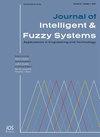熔融沉积right-first的模糊粒子群
IF 1
4区 计算机科学
Q3 COMPUTER SCIENCE, ARTIFICIAL INTELLIGENCE
引用次数: 0
摘要
正确的第一次生产使制造公司既有利可图又具有竞争力。在包括3D打印在内的许多行业中,确定这样一个概念并不像看起来那么简单。因此,本文提出了一种基于模糊逻辑和多目标群优化相结合的right-first框架,对基于径向的集成网络进行逆向工程。这样的框架被引出来表示熔融沉积建模(FDM)过程。这样的框架旨在确定最佳的FDM参数,这些参数应用于从第一次就产生具有所需机械特性的3D打印样品。提出的right-first框架可以确定FDM参数的最佳集合,这些参数应用于3D打印具有所需特性的部件。结果表明,本文建立的right-first模型能够成功地识别出最优参数集,平均错误率为4.7%。这种框架在一个真实的医疗案例中得到了验证,为一名21岁的患者生产了三种不同的医疗植入物,它们具有所需的机械特性。本文章由计算机程序翻译,如有差异,请以英文原文为准。
Fuzzy particle swarm for the right-first-time of fused deposition
Right-first-time production enables manufacturing companies to be profitable as well as competitive. Ascertaining such a concept is not as straightforward as it may seem in many industries, including 3D printing. Therefore, in this research paper, a right-first-time framework based on the integration of fuzzy logic and multi-objective swarm optimization is proposed to reverse-engineer the radial based integrated network. Such a framework was elicited to represent the fused deposition modelling (FDM) process. Such a framework aims to identify the optimal FDM parameters that should be used to produce a 3D printed specimen with the desired mechanical characteristics right from the first time. The proposed right-first-time framework can determine the optimal set of the FDM parameters that should be used to 3D print parts with the required characteristics. It has been proven that the right-first-time model developed in this paper has the ability to identify the optimal set of parameters successfully with an average error percentage of 4.7%. Such a framework is validated in a real medical case by producing three different medical implants with the desired mechanical characteristics for a 21-year-old patient.
求助全文
通过发布文献求助,成功后即可免费获取论文全文。
去求助
来源期刊

Journal of Intelligent & Fuzzy Systems
工程技术-计算机:人工智能
CiteScore
3.40
自引率
10.00%
发文量
965
审稿时长
5.1 months
期刊介绍:
The purpose of the Journal of Intelligent & Fuzzy Systems: Applications in Engineering and Technology is to foster advancements of knowledge and help disseminate results concerning recent applications and case studies in the areas of fuzzy logic, intelligent systems, and web-based applications among working professionals and professionals in education and research, covering a broad cross-section of technical disciplines.
 求助内容:
求助内容: 应助结果提醒方式:
应助结果提醒方式:


